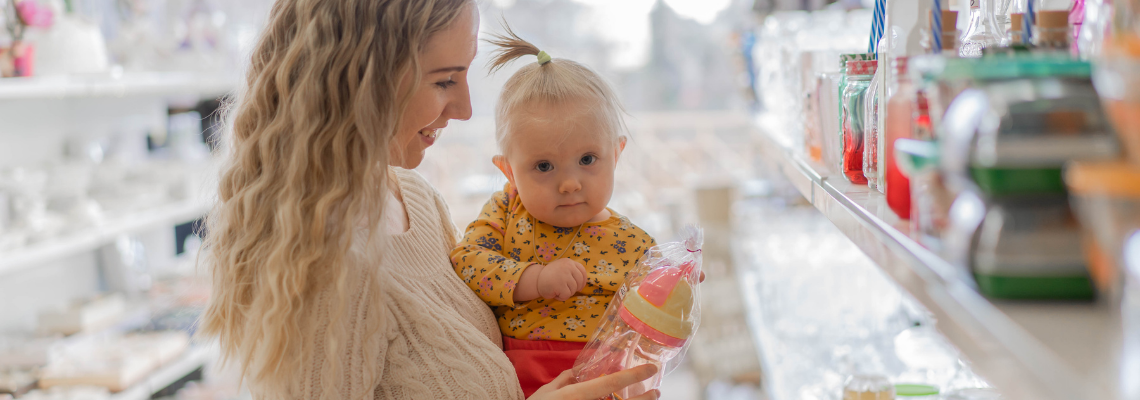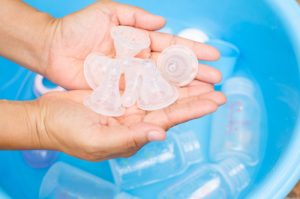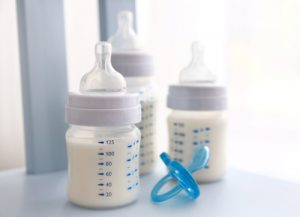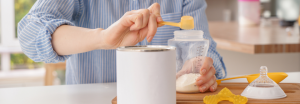
As a new parent, choosing the correct baby bottles can be a strenuous task as there are many factors to consider when making the purchase. In today’s blog post, we provide tips on what to look out for when buying baby bottles as a first-time parent.
Factors to Consider When Buying Baby Bottles
1. Bottle Types
Bottles may come comprised of different materials, each bearing significant meaning to your baby’s consumption needs.
Plastic: These types of bottles are lightweight and durable against fall damage. However, they quickly deteriorate, requiring frequent replacements. If you’re considering settling for plastic bottles, purchase only brand-new ones, as old bottles may contain harmful traces of bisphenol A(BPA), which is terrible for the baby.
Glass: Unlike plastic, glass bottles are BPA-free. However, they are susceptible to cracking and breaking. Furthermore, glass baby bottles are heavy for a new baby to hold and instead should be provided to toddlers.
Silicone: Silicone baby bottles are similar to plastic ones in terms of weight. Not only are they BPA-free, but they also are flexible. They are ideal for newborn babies.
Disposable Plastic Liners: These types of bottles can only be used once. They make a great starting point for new parents before finding the optimal baby bottle for their infant.
Stainless Steel: Steel bottles are BPA-free, highly durable, tough and long-lasting. They can withstand being dropped; however, you won’t be able to gauge the milk level with steel bottles as they are not transparent.
 2. Nipple Types
2. Nipple Types
Another factor to consider when purchasing a baby bottle is the nipple type. Silicone nipples are firm and durable; they do not wear and tear quickly. However, they might prove challenging to chew for newborn babies. Latex nipples are softer and manageable in your newborn’s mouth. They are very flexible. Furthermore, latex nipples are suitable for feeding formula, although they are not as durable and wear out much faster than silicone alternatives. Most baby bottle nipples require constant replacement. Therefore, it’s always a good idea to buy a few handfuls and keep them in stock.
3. Nipple Sizes
Not all baby bottle nipples fit the same. Each nipple size is constructed with age limitations in place to ensure proper use. A size-one nipple should be used for bottle-feeding babies younger than six months. The hole in the nipple is small and doesn’t release large quantities of milk to choke your baby. Size two-to-four nipples are optimal for babies between the ages of six and twelve months. With each upgrade, the holes become subtly bigger, allowing your child to get used to swallowing more volumes of formula or milk. By the time your toddler begins to wean, he or she will be comfortable switching to a sippy cup until being ready to chew solid food.
4. Cost Differences
Plastic bottles are the most affordable options in the market today. However, they don’t last as long and may require constant replacement. On the other hand, stainless steel bottles are quite expensive but are long-lasting. Depending on your allocated budget, you may opt for glass, silicone and plastic bottles or invest in expensive steel bottles if money is not the issue.
Additional Accessories
Bottles come equipped with additional components to improve functionality:
- Venting: Vented nipples help prevent your baby from swallowing air and getting bloated.
- Bottle Warmers: A warmer helps keep the contents of the baby bottle warm and at ideal temperatures.
- Electric Breast Pump: A breast pump can fit in a bottle and directly feed your baby without much intervention.
5. Cleaning
Plastic bottles can be tedious to clean. After repeated use, the bottle emits a pungent odor no matter how much you wash it. Glass and stainless-steel bottles are easy to clean. A bottle brush can be used to scrub grime at the bottom of the bottle. Always clean your baby’s bottle in boiling water and soap after feeding to prevent bacteria growth.
 6. Safety Features
6. Safety Features
Consider buying baby bottles with safety features, such as padding for glass bottles, straps, and tight lids to prevent spilling heated milk or formula onto your child.
7. Storage Capacity
Baby bottles come in a variety of sizes. Depending on the volume of milk you wish to feed your child, you may opt for a small 150-milliliter bottle or a large 280-milliliter bottle.
8. Insulation
Stainless-steel bottles are quick to cool and lose heat due to their low insulation properties. A plastic or glass bottle can offer improved heat insulation. You can also purchase a bottle warmer to heat the bottle as you see fit.
9. Comfort for Holding
Plastic and silicone bottles are easy on your baby’s hand. Furthermore, due to the flexible nature of silicone bottles, they are comfortable to grasp. On the other hand, glass bottles can prove slightly heavy and may exert your baby’s arms.
In Summary
As a new parent, selecting the right baby bottles for your infant doesn’t have to be stressful. In our guide, we expound on the diverse factors to contemplate when purchasing the ideal bottle for your baby’s needs.


